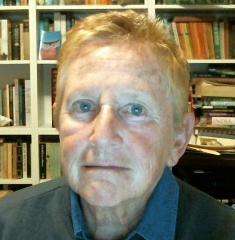It is hard to imagine a more contrasting pair than Duruflé’s Requiem and Bach’s Easter Oratorio. Perhaps that was the point? To reduce the audience to somnolent misery, then spring them back to life with joyful Bach? I could have done without the former, but of course others may have really enjoyed it. Be that as it may, one could hardly hope for a better rendition, of either work.
Said Requiem was composed in 1947 for choir and organ, which was the version heard here, with later orchestrated versions. It is basically a truncated Mass, often compared to Fauré’s version of 1887, which is a bit tough on the latter. The Duruflé version also comes in nine movements, which move slowly by, with little variation. Tempo markings vary between Andante and Andantino, with some excursions into poco più animato (a bit more animated), with one soaring rise in Lux aeterna to moderato. The effect of “Hosanna in excelsis” was pretty much exactly the same as the “Dies illa, dies irae”. The colour palette is almost uniformly grey, with one limited mezzo-soprano intervention exquisitely rendered into bronze by Fiona Campbell. There are also two baritone solos which don’t alleviate the gloom much but were well rendered by James Clayton. In fact, the choral singing was quite exquisite in terms of accuracy and discipline as is customary for the St George’s Cathedral Consort under their choirmaster, and the evening’s conductor, Joseph Nolan, and the pipe organ accompaniment well played by Stewart Smith.
Being greeted with three trumpets and timpani after the interval was like a cold glass of champagne on a hot day, reviving the spirits and cleansing the aural palate. One of Bach’s most joyful works, it is full of contrasting moods and tempi and dynamics, with a varied range of solo and ensemble vocal and instrumental pieces. The choir was joined by members of the West Australian Symphony Orchestra, with a continuo group of Baroque experts, Smith on the chamber organ and Noeleen Wright on cello, although most of the players used classical/modern instruments. The WASO’s usual concertmaster Laurence Jackson was in his usual chair.
After the excitement of the trumpets (Brent Grapes, Kathryn Aducci, Peter Miller), the Adagio featured a mesmerising oboe solo by Liz Chee, then the trumpets returned for the chorus and duet, the latter sung brightly by tenor Paul McMahon and Clayton. After the following recitative, perhaps the highlight of the evening was soprano Sara Macliver’s rendition of the demanding aria “Seele, deine Spezereien” accompanied by the WASO’s principal flautist, Andrew Nicholson. This was a time-stopping account, with Macliver’s rock solid technique and cut-glass soprano providing exquisite clarity, accuracy, subtle ornamentation, attention to textural detail and displaying the richness of her middle voice. Nicholson’s accompaniment and solo airings were equally fine.
The tenor aria, “Sanfte soll mein Todeskommer” was as gloomy and gentle as the text suggests, but it seemed a little low for McMahon’s usually ringing tenor. Campbell featured again with “Saget, saget mir geschwinde”, a much more upbeat, almost rollicking aria allowing her creamy but bright mezzo voice to shine. It was further enhanced by Leanne Glover’s cor anglais obbligato (more usually oboe d’amore). The bass, Clayton, had less to do than the other soloists, but did it well. The final chorus, “Preis und Dank” was just as upbeat as the opening, with the return of the trumpets and timpani, rendering a very robust performance.
This concert was dedicated to Taryn Fiebig, a leading Australian soprano originally from Perth, who recently died aged 49.


